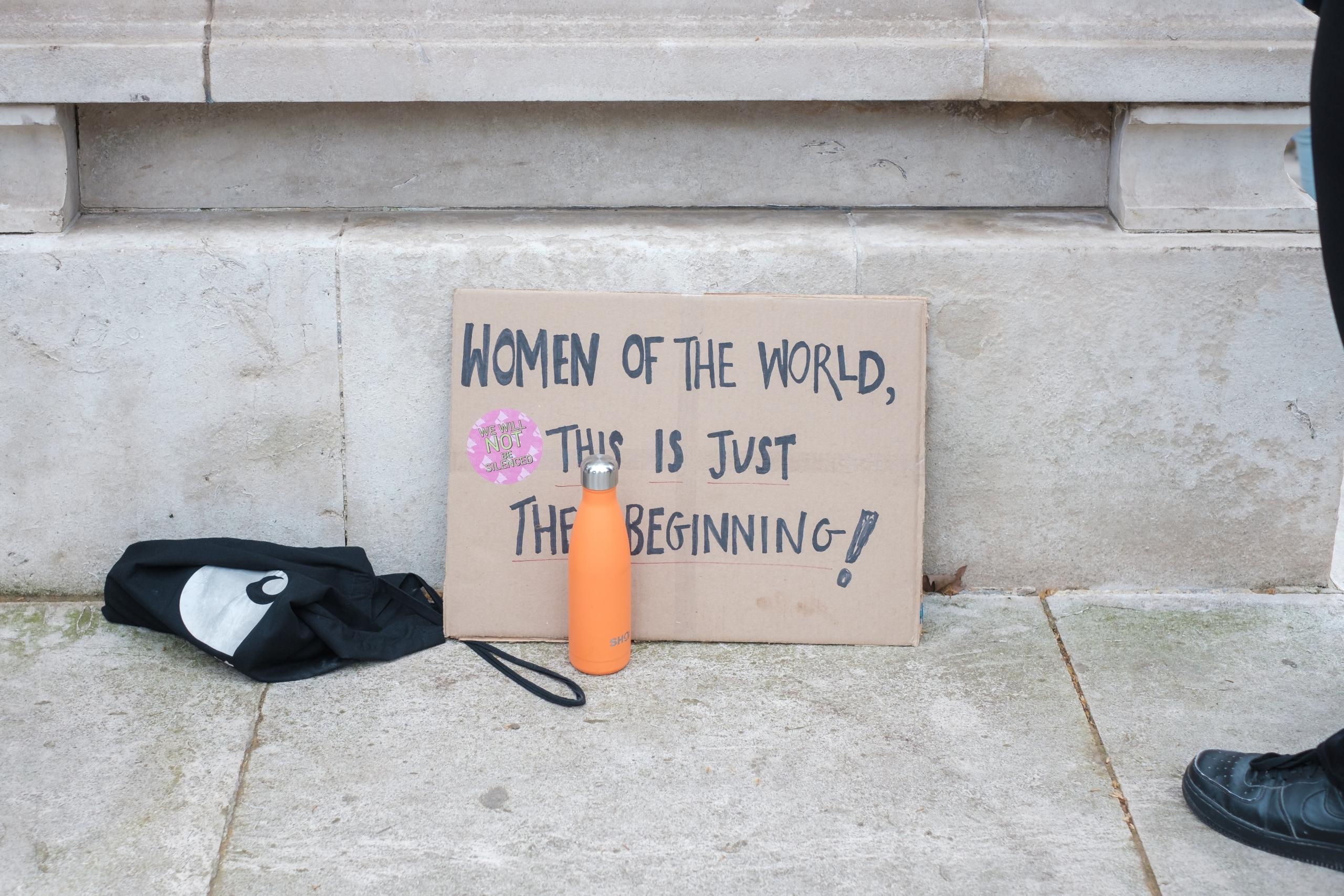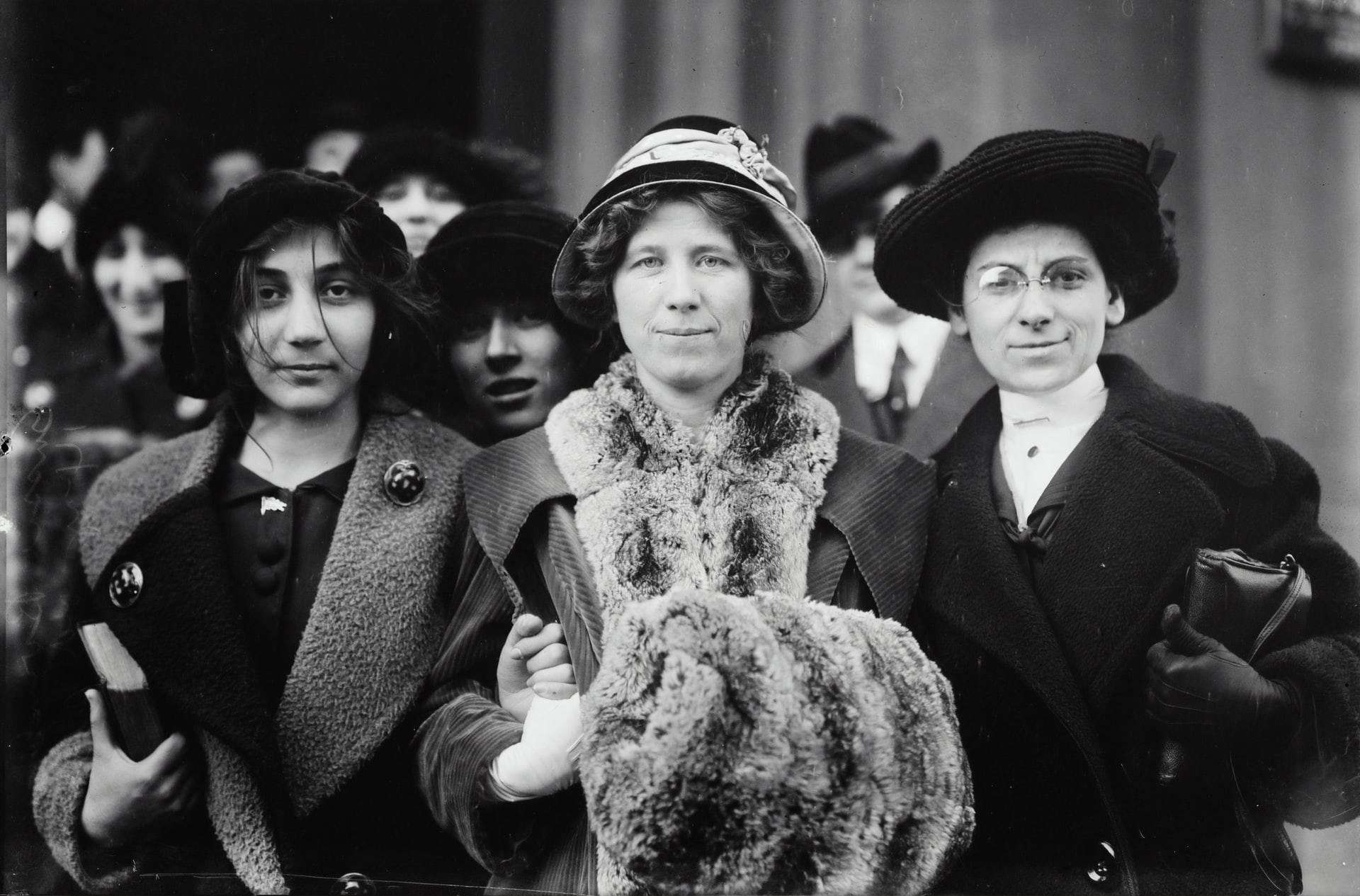From the first wave of feminism, the women’s rights movement for social, political and economic equality and history of feminism dates back to the beginnings of western culture.

The Early Feminist Waves
As early as the 3rd century BC, there is evidence of the feminist movement. One of the first events that protested against the limiting status of women, was when a group of protesters filled Rome’s Capitoline Hill to block the entrances to the Forum where Marcus Cato resisted the repeal of the laws that limited women’s use of valuable goods. Even though it was rebellion that made its mark in feminism history, only a few voices spoke up about the inferior treatment of women.
This wave of feminism continued during the Middle Ages in Europe where women had no rights to study, own property or contribute to society in any way. The negative feminist theory of the day stated that women needed to be represented by a male in order to conduct business. They were barred from almost all professions and considered only useful for reproductive purposes.
During the 14th and 15th century in France, the feminist movement gained further traction when Christine de Pisan, the first feminist philosopher, challenged the condition and status of all women and made strong calls for the introduction of female introduction.
Later in the 15th century, Venetian, Laura Cereta, published a series of letters that combined the complaints of women regarding both marital oppression and denial of education. This began a feminist theory and literary subgenre that saw many emerging feminist authors take a stance against inequality.
This first feminism wave grew in strength during the 16th century when the debate regarding the true nature and purpose of women reached England. Campaigners like Jane Anger joined the struggle, but despite a growth in awareness it was only that that a coherent feminist movement was truly birthed.
The 18th Century’s Age of Enlightenment
During the Age of Enlightenment, philosophes continued the debate around the inequities of freedom, race and social class. However, even though stalwarts like Jean-Jacques Rousseau and other French revolutionaries wrote the Declaration of the Right of Man and the Citizen, they failed to speak about the legal position of women and even referred to them as ‘silly and frivolous’.
There were male philosophers like Marquis de Condorcet and Jeremy Bentham who did adopt feminist theory.
Not only did they defend human rights, but also the equality of women, their voting rights and participation in political activities.
This period was not only characterised by a wave of feminism but also a growth in secular philosophy. The rising voice of female intellectuals during this time regarding equality and liberty for both sexes certainly contributed to the history of feminism.
In response to the growing conversation around women’s rights, in 1791, Olympe de Gouges published the Declaration of the Right of Woman and of the [Female] Citizen. In her text, de Gouges takes the feminist movement to another level when she declares that women are equal partners to men.
In 1792, A Vindication of the Right of Woman by Mary Wollstonecraft was published. Here she challenges the notion that women exist to please men. She identifies the upbringing of women, their educational limitations, and insists on equal opportunities in the spheres of work, politics and education for both sexes. There is no doubt that the writings of Wollstonecraft made a dramatic impact on the first feminist wave.
Learn about the history of feminism here.

- The history of feminism is long as human history, but in many places, women are still fighting for their rights. Source Unsplash
The 19th Century Feminist Movement
The 19th century’s suffrage movement, which was characterised by powerful activism, had a significant impact on the history of feminism and the feminist movement in both Europe and the United States.
Feminism History and Literature
There’s no doubt that the beginning of the 19th century, where the image of Victorian women was still evident, was a turning point in the history of feminism. The idea that women only belonged in private society for the purposes of their husbands and children prevailed. The ere was typified by the ‘feminine ideal ‘also known as the Cult of Domesticity which was found in general literature and Victorian conduct books.
Parallel to this them, feminist theory began to emerge through the works of fictional authors like Jane Austen and Anne Brontë. Male writers like George Gissing, George Meredith and Thomas Hardy also recognised women’s inequality and made their mark during the first feminist wave.
In fact, John Neal is lauded as being the first lecturer on the subject of women’s rights and feminist theory in the United States. In addition, he contributed to the feminist movement through public speaking, novels, articles and essays where declared that there was intellectual equality between the sexes. He demanded suffrage, equal remuneration, better working conditions and better education for women. Neal’s work is considered substantial to the first feminist wave and fill in the gaps left by writers like Mary Wollstonecraft, Margaret Fuller and Sarah Moore Grimké.
Seneca Falls Convention
The first feminist wave was marked by the Seneca Falls Convention, which was the first women's rights convention. Held in Seneca Falls, New York, women gathered to deliberate the social, religious and civil conditions of women’s rights.
This convention, which gathered women from all over the United States and even other parts of the world was a first for the feminist movement.
Political and Education Reforms of the First Feminist Wave
By the mid-1900s there was yet to be a massive adoption of feminist theory. Even though a wave of feminism continued to spread throughout the western world, there were little signs of change to the social and political orders of the day.
By contrast, the emphasis on female virtue and the female role only increased. The attitude and social model toward women of the time was described by many as confining and repressive and thus provoked further progress for the first wave of feminism and ultimately the history of feminism in general.
During 1850, the Ladies of Langham Place, including Bessie Rayner, Barbara Leigh Smith and Anna Jameson met regularly at London’s Langham Place to discuss how to present a unified voice on behalf of women with regards to marital law, education and employment reforms.
Inspired by the success of the Seneca Falls Convention, they managed to collect thousands of signatures to petition for legislative reform in United Kingdom. Some of these, like the education reform efforts for education which eventually gave women access to universities, were successful.
Amongst the reformists who founded the first higher education institution (Cambridge’s Girton College in 1869), were Emily Davies and Barbara Leigh Smith. Institutions that followed thereafter, also contributing to the history of feminism, include Newnham College in 1871, also in Cambridge and Lady Margaret Hall in 1879 in Oxford.
On the political front, many campaigns gave women the opportunity to create social reform and express themselves too. This was demonstrated by Josephine Butler who added to feminism history through her organisation of women’s groups.
Feminism History and Suffrage
The first feminist wave continued until the early 20th century and was characterised by debate around women’s rights, suffrage, education, abolition of gender apartheid and better working conditions.
In the United States, first-wave feminism was considered to have ended with the passage of the Nineteenth Amendment to the United States Constitution (1920), which granted women the right to vote in the United States. The women's right to vote movement in America was initiated in 1869 by Susan B. Anthony and Elizabeth Cady Stanton were the founders of the women's suffrage movement and had spent over 30 years encouraging women to protest in the streets and achieve the women's right to vote.
In 1866 the Langham Place ladies set up a suffrage committee in the United Kingdom, which was renamed to the London Society for Women's Suffrage in 1867. The group which was very active, grew in numbers as they raised petitions, wrote articles and gained political experience. Even so, progress was slow at a government level.
These efforts continued to build a general up amidst frustration and pressure which led to further women’s movements. All of this soon led to a more militant type of suffragism and greater public outcry. Distinct green, white and purple and white emblems as well as the Artists' Suffrage League logo become common sites as protests grew in violence without achieving global success.
It was not until much later during the first and second world wars that women became recognised and valuable for their work. British women finally achieved equal suffrage in 1928, and it wasn’t until later in the 20th century that second-wave feminism began to address sexual harassment, political, and patriarchal issues.















